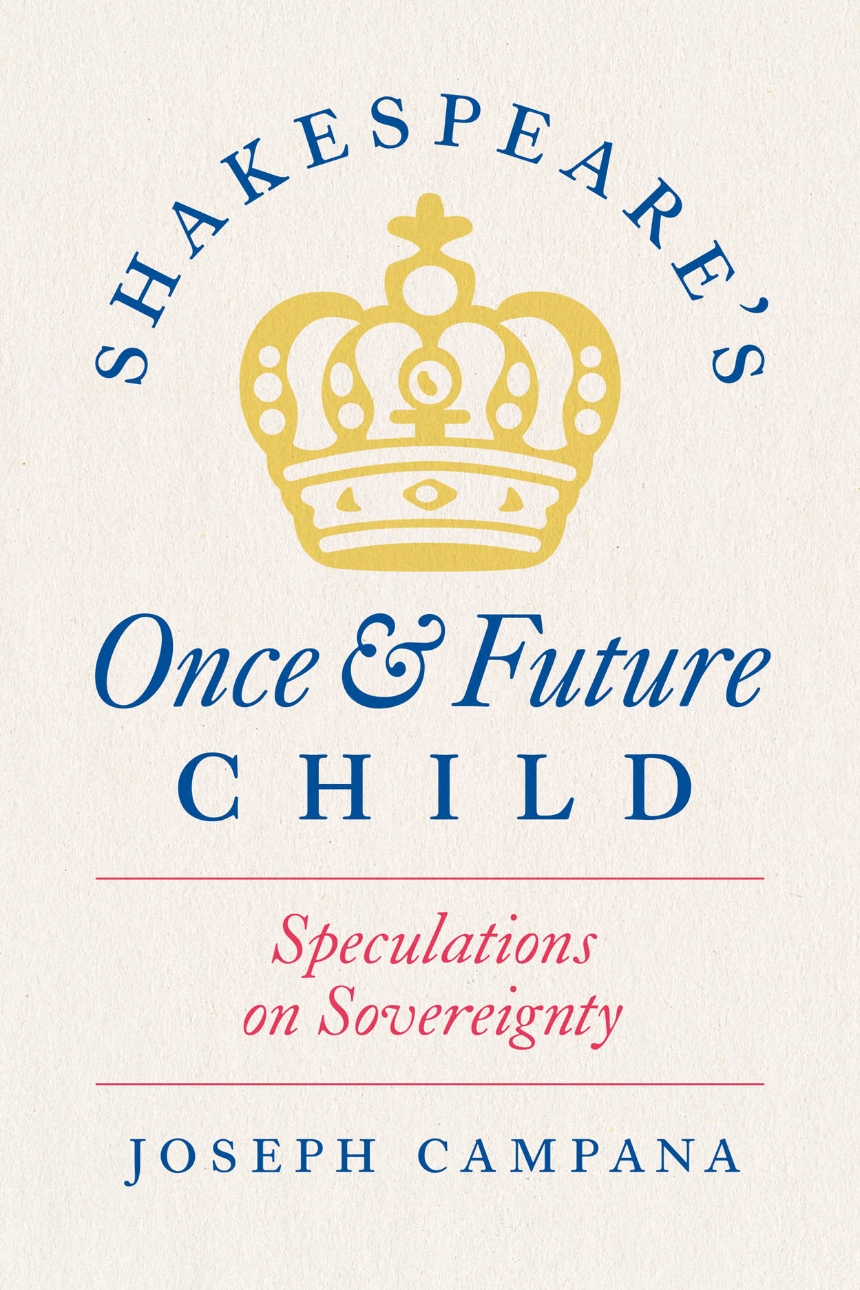Shakespeare’s Once and Future Child
Speculations on Sovereignty
9780226832548
9780226832531
9780226832555
Shakespeare’s Once and Future Child
Speculations on Sovereignty
A study of Shakespeare’s child figures in relation to their own political moment, as well as our own.
Politicians are fond of saying that “children are the future.” How did the child become a figure for our political hopes? Joseph Campana’s book locates the source of this idea in transformations of childhood and political sovereignty during the age of Shakespeare, changes spectacularly dramatized by the playwright himself. Shakespeare’s works feature far more child figures—and more politically entangled children—than other literary or theatrical works of the era. Campana delves into this rich corpus to show how children and childhood expose assumptions about the shape of an ideal polity, the nature of citizenship, the growing importance of population and demographics, and the question of what is or is not human. As our ability to imagine viable futures on our planet feels ever more limited, and as children take up legal proceedings to sue on behalf of the future, it behooves us to understand the way past child figures haunt our conversations about intergenerational justice. Shakespeare offers critical precedents for questions we still struggle to answer.
Politicians are fond of saying that “children are the future.” How did the child become a figure for our political hopes? Joseph Campana’s book locates the source of this idea in transformations of childhood and political sovereignty during the age of Shakespeare, changes spectacularly dramatized by the playwright himself. Shakespeare’s works feature far more child figures—and more politically entangled children—than other literary or theatrical works of the era. Campana delves into this rich corpus to show how children and childhood expose assumptions about the shape of an ideal polity, the nature of citizenship, the growing importance of population and demographics, and the question of what is or is not human. As our ability to imagine viable futures on our planet feels ever more limited, and as children take up legal proceedings to sue on behalf of the future, it behooves us to understand the way past child figures haunt our conversations about intergenerational justice. Shakespeare offers critical precedents for questions we still struggle to answer.
272 pages | 6 halftones | 6 x 9 | © 2024
Literature and Literary Criticism: British and Irish Literature
Reviews
Table of Contents
List of Figures
Introduction
Part 1: The Child and the Sovereign
1. Sanctuary Children from Richard III to King John
2. Specters of Sovereignty: The Ends of Succession from Richard II to Macbeth
Part 2: Shakespeare’s Roman Biopoetics
3. Shakespeare’s Increase: Vegetative Life in The Rape of Lucrece and Titus Andronicus
4. Of Scale and Sovereignty: Boys and Bees in Shakespeare’s Rome
Part 3: The Traffic in Children
5. Double Trouble: Flexible Subjects and Social Numbers in The Comedy of Errors and Twelfth Night
6. The Traffic in Children: Shipwrecked Shakespeare, Precarious Pericles
Conclusion: H Is for Humanism: The Melancholia of Information in Hamlet and The Winter’s Tale
Epilogue
Acknowledgments
Notes
Index
Introduction
Part 1: The Child and the Sovereign
1. Sanctuary Children from Richard III to King John
2. Specters of Sovereignty: The Ends of Succession from Richard II to Macbeth
Part 2: Shakespeare’s Roman Biopoetics
3. Shakespeare’s Increase: Vegetative Life in The Rape of Lucrece and Titus Andronicus
4. Of Scale and Sovereignty: Boys and Bees in Shakespeare’s Rome
Part 3: The Traffic in Children
5. Double Trouble: Flexible Subjects and Social Numbers in The Comedy of Errors and Twelfth Night
6. The Traffic in Children: Shipwrecked Shakespeare, Precarious Pericles
Conclusion: H Is for Humanism: The Melancholia of Information in Hamlet and The Winter’s Tale
Epilogue
Acknowledgments
Notes
Index
